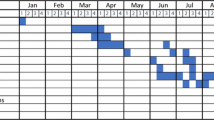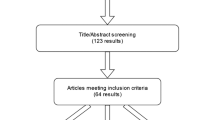Abstract
A discreet event simulation methodology has been used to establish a quantitative relationship between Emergency Department (ED) performance characteristics, such as percent of time on ambulance diversion and the number of patients in queue in the waiting room, and the upper limits of patient length of stay (LOS). A simulation process model of ED patient flow has been developed that took into account a significant difference between LOS distributions of patients discharged home and patients admitted into the hospital. Using simulation model it has been identified that ED diversion could be negligible (less than ∼0.5%) if patients discharged home stay in ED not more than 5 h, and patients admitted into the hospital stay in ED not more than 6 h Using full factorial design of experiments with two factors and the model’s predicted percent diversion as a response function, other combinations of LOS upper limits have been determined that would result in low ED percent diversion as well. It has also been determined that if the number of patients exceeds 11 in queue in ED waiting room then the diversion percent is rapidly increasing.












Similar content being viewed by others
References
Litvak, E., Long, M., Cooper, A., and McManus, M., Emergency department diversion: Causes and solutions. Acad. Emerg. Med. 8:111108–1110, 2001.
Haraden, C., Nolan, T., and Litvak, E., Optimizing Patient Flow: Moving Patients Smoothly Through Acute Care Setting. Institute for Healthcare Improvement Innovation Series 2003. White papers 2, Cambridge, MA, 2003.
Litvak, E., and Long, M., Cost and quality under managed care: Irreconcilable differences? Am. J. Manage. Care. 6:3305–312, 2000.
Gunal, M., and Pidd, M., Understanding Accident and Emergency Department Performance using Simulation. Proceedings of the 2006 Winter Simulation Conference. Ed. Perrone, L, et al. 2006 IEEE, p. 446–452.
Garcia, M., Centeno, M., Rivera, C., and DeCario, N., Reducing Time in an Emergency Room via a Fast-track. Proceedings of the 1995 Winter Simulation Conference. Ed.: Alexopoulos C., et al. 1995 IEEE, p.1048–1053.
Miller, M., Ferrin, D., and Szymanski, J., Simulating Six Sigma Improvement Ideas for a Hospital Emergency Department. Proceedings of the 2003 Winter Simulation Conference. Ed. Chick, S, et al. 2003 IEEE, p. 1926–1929.
Simon, S., and Armel, W., The Use of Simulation to Reduce the Length of Stay in an Emergency Department. Proceedings of the 2003 Winter Simulation Conference. Ed. Chick, S, et al. 2003 IEEE, p. 1907–1911.
Blasak, R., Armel, W., Starks, D., and Hayduk, M., The Use of Simulation to Evaluate Hospital Operations between the ED and Medical Telemetry Unit. Proceedings of the 2003 Winter Simulation Conference. Ed. Chick, S, et al. 2003 IEEE, p. 1887–1893.
Canadian Association of Emergency Physicians. Position Statement on Emergency Department Overcrowding, February 2007. www.CAEP.ca.
Mayhew, L., and Smith, D., Using queuing theory to analyze the Government’s 4-h completion time target in accident and emergency departments. Health Care Manage. Sci. 11:11–21, 2008.
Hall, R., Queuing Methods for Service and Manufacturing. Prentice Hall, Englewood Cliffs, NJ, USA, 1990.
Swain, J., Biennial Survey of discreet-event simulation software tools. OR/MS Today, v.34, N 5, October, 2007. The Institute for Operations Research and the Management Science. Lionheart Publishing, Inc. http://www.lionhrtpub.com.
Johnson, N., Kotz, S., and Balakrishnan, N., Continuous Univariate Distributions, vol 2. John Wiley & Sons, New York, 1995.
Marshall, A., Vasilakis, C., and El-Darzi, E., Length of stay-based patient flow models: recent developments and future directions. Health Care Manage. Sci. 8:213–220, 2005.
de Bruin, A., van Rossum, A., Visser, M., and Koole, G., Modeling the emergency cardiac in-patient flow: an application of queuing theory. Health Care Manage. Sci. 10:125–137, 2007.
Author information
Authors and Affiliations
Corresponding author
Rights and permissions
About this article
Cite this article
Kolker, A. Process Modeling of Emergency Department Patient Flow: Effect of Patient Length of Stay on ED Diversion. J Med Syst 32, 389–401 (2008). https://doi.org/10.1007/s10916-008-9144-x
Received:
Accepted:
Published:
Issue Date:
DOI: https://doi.org/10.1007/s10916-008-9144-x




